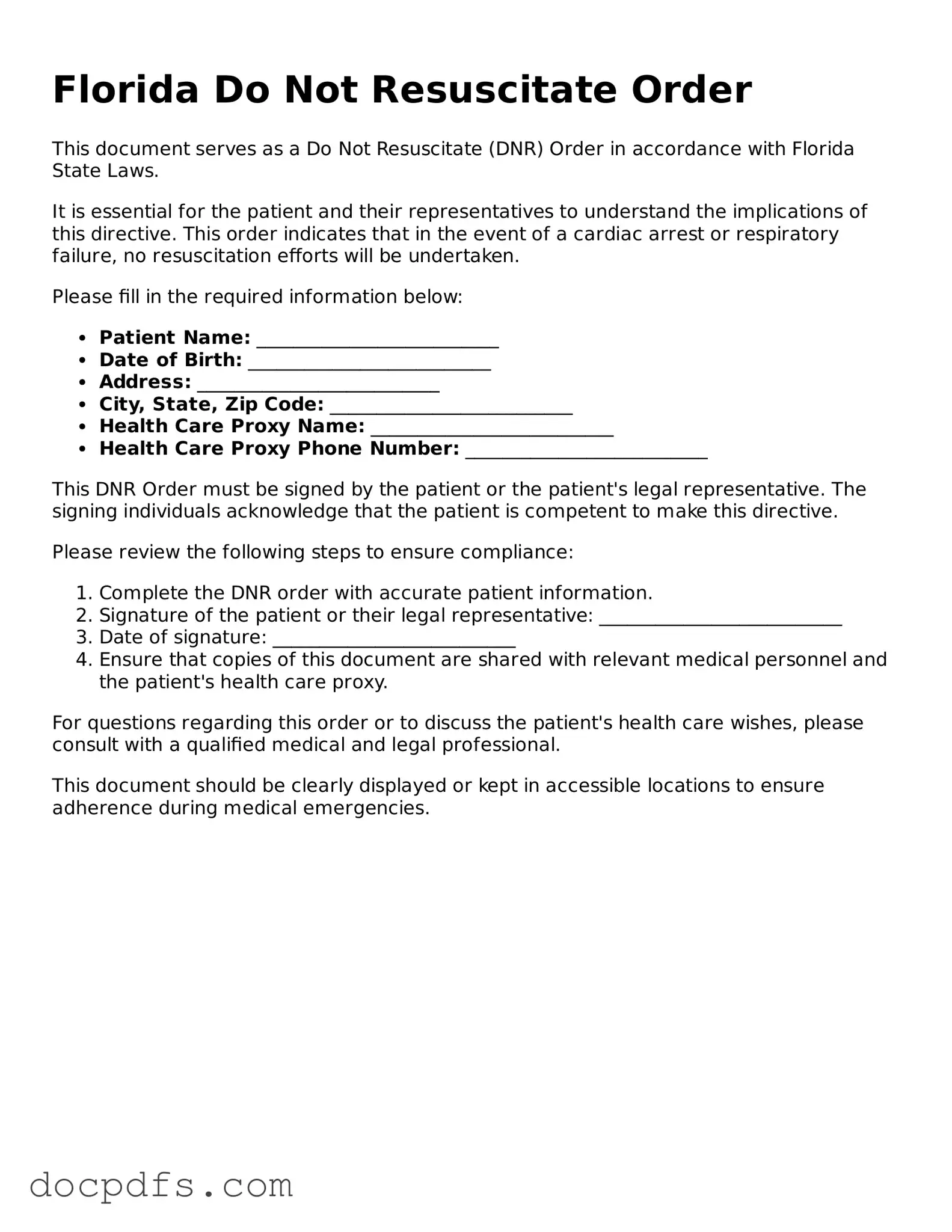In the state of Florida, the Do Not Resuscitate Order (DNRO) form serves as a crucial document for individuals who wish to make their end-of-life preferences known, particularly regarding resuscitation efforts in the event of a medical emergency. This form allows patients to communicate their desire to forgo cardiopulmonary resuscitation (CPR) and other life-saving measures, providing clarity to healthcare providers and loved ones during critical moments. To be valid, the DNRO must be completed and signed by a physician, ensuring that the decision is informed and based on the patient's medical condition. Additionally, the form must be readily accessible, often kept in a visible location or carried by the patient, to ensure that emergency personnel can quickly locate it. Understanding the implications of the DNRO is essential, as it not only reflects personal values and wishes but also helps to alleviate potential conflicts among family members and healthcare providers about the appropriate course of action in a crisis. As individuals navigate the complexities of healthcare choices, the DNRO stands as a significant tool for asserting autonomy and ensuring that one's wishes are honored during life's most challenging moments.
